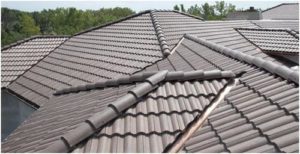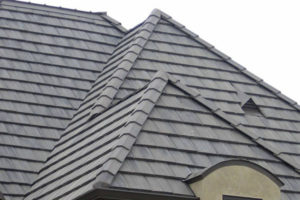 Widgets In most homes after heavy snowfalls, there tends to be ice dams on the roof. Although these dams are common towards the edge of the roof, they can also be seen on some other parts of the roofing. Some homeowners do not even have an idea there are ice dams on the roof considering it happens when there is snow. Proper maintenance is needed since not many roof replacements can deal with pools of water on their own.
Widgets In most homes after heavy snowfalls, there tends to be ice dams on the roof. Although these dams are common towards the edge of the roof, they can also be seen on some other parts of the roofing. Some homeowners do not even have an idea there are ice dams on the roof considering it happens when there is snow. Proper maintenance is needed since not many roof replacements can deal with pools of water on their own.
Why are Ice Dams Harmful to the Roof?
When the ice on the roof starts melting, it forms pools of water on the roof. The water may not be able to reach the gutter in good time and instead it seeps through the roof. Once it’s underneath the shingles, it gets into the attic and on to the ceiling. The next thing you will be seeing pools of water in your house, damp waters and spots on the ceiling. The damage can be massive.
What Causes Ice Dams?
As a homeowner who understands the damage the ice dam can do to your roof, you are probably wondering what causes and worsens this condition. If your roof has uneven temperatures, it will lead to the ice dam. The roofing underlayment, the weather and heat in the house escaping to the attic are some of the things that worsen ice dams. As a homeowner, there are several things you can to reduce the formation of ice dams on your roof and their effects. A professional roofer can help you with this.
Have a Water Proof Shingle Underlayment
This will work when replacing a roof or installing a new one and it’s best done by a professional roofer. Before your preferred shingles are installed, the roofer will install a polymer or asphalt sheet on the roof. This sheet has self-sealing capabilities and this is what prevents ice dams from damaging your roof.
Attic Ve ntilation
ntilation
One of the easiest ways to prevent ice dams on your roof is ensuring good attic ventilation. If you look under your eaves or soffits, you may be able to see a series of intake vents. They should neither be covered nor be left to be clogged up with debris. If you are not able to identify them, talk to a roofer who can advise whether they are present or they need to be installed.
In addition to the intake vents, your attic should also have exhaust vents that draws fresh air into the attic. With these two kinds of vents installed in your attic, you are lest assured that variations in temperatures will be minimized. This is the temperature of UV rays and that which escapes from the house below. This will eventually prevent the formation of ice dams on your roof.
Ensure Proper Attic Insulation
For the attic insulation to help in case of ice dams, it has to be effective. Light fixtures and foot traffic are some of the things that can affect the insulation. Warm spots boosts the formation of ice dams on your roof thus for the exhaust ducts in the house, as the homeowner you should ensure they are vented to the outside.